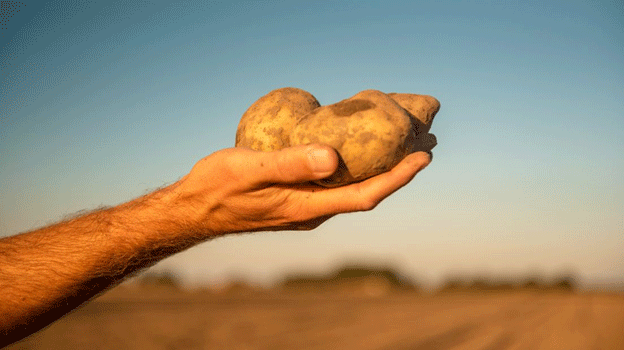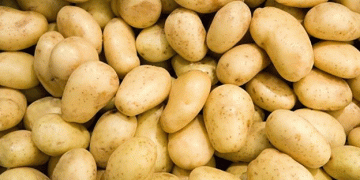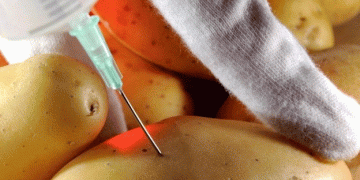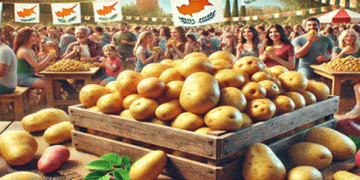The contrast couldn’t be greater. In 2023 and 2024, Dutch farmers were delayed in planting their seed potatoes until late May or even June due to heavy and persistent spring rainfall. Fast forward to 2025, and the situation has flipped: the first potato crops are already in the ground in early April, taking advantage of what growers are calling “ideal conditions.”
According to data from the Royal Netherlands Meteorological Institute (KNMI), March 2025 recorded just 6 mm of rainfall, making it the driest March since official measurements began. The normal average for March is around 53 mm, highlighting the severity of this spring’s dryness. While this raises concerns for later in the growing season, it has created a rare early planting window that many farmers are eager to use.
Ideal Conditions—but Not Without Risks
In Friesland, where most fields are composed of sandy loam or clay, soil conditions have rapidly improved. Gerlof Bergmans, an arable farmer from Wijnaldum and regional chairman of the Dutch Arable Farming Union (NAV), says:
“The soil—and even the subsoil—is drying out well. That means we can carry out many operations now. Most farmers are ready to go full speed ahead.”
Normally, potato planting begins around mid-April. This year, planting has started up to a month earlier in some regions. But early planting is not without its risks. Dutch wisdom says, “April does what it wants,” and a late frost is still possible. Bergmans explains:
“Frost is mainly a risk for seed crops. Potatoes are planted deeper, so they are relatively safe.”
Bergmans recalls that early April planting was not unheard of even 45 years ago, but today’s climate extremes are more intense and frequent, complicating decision-making and increasing exposure to weather risks.
The Economics of Timing and Scale
Modern Dutch farms are not just battling the weather—they’re managing high input costs and large-scale operations. From seed potatoes to precision equipment, everything has become more expensive. Farmers must be ready to act fast when conditions turn favorable.
“When the weather is right, everything must be planted within a week,” says Bergmans. “The investment costs are enormous, so the return must be high.”
While 2024 was a good year for potatoes, other crops like sugar beets, onions, and wheat delivered disappointing returns. This underscores the importance of crop timing and market volatility. As Bergmans puts it,
“Sometimes you wonder whether investing in food production still pays off—or whether a farmer would be better off putting his money into stocks if he wants to make a profit.”
Looking Ahead: Opportunity or Fragile Advantage?
Despite the optimism around early planting, concerns linger. With little rainfall in March and no guarantee of regular precipitation in the months ahead, irrigation and drought management will be crucial. Furthermore, climate change is turning weather patterns more erratic, with both spring droughts and autumn floods becoming more common in Europe.
The question is not just about seizing early opportunities, but how to build resilience into production systems that can adapt to extreme swings.
Dutch farmers are racing ahead this season, planting potatoes in record time under near-perfect early spring conditions. While this offers a promising start, it also highlights deeper challenges—from rising costs and weather extremes to volatile returns. For today’s arable farmer, success lies in speed, strategy, and adaptability—and a little luck from the skies.






